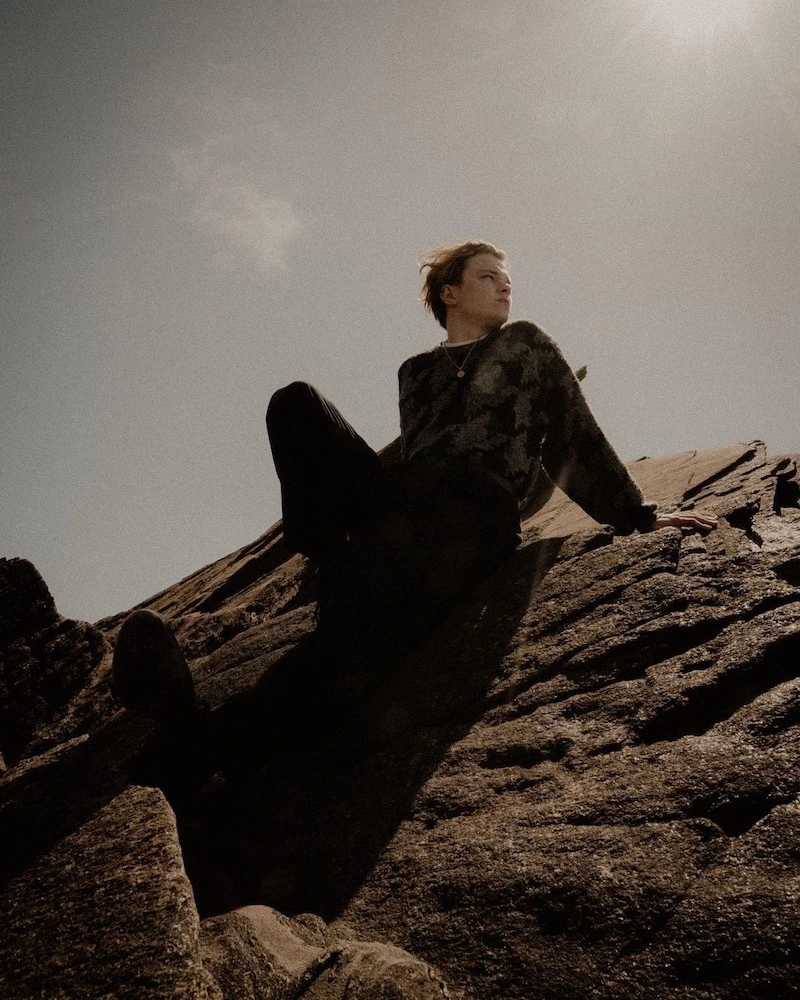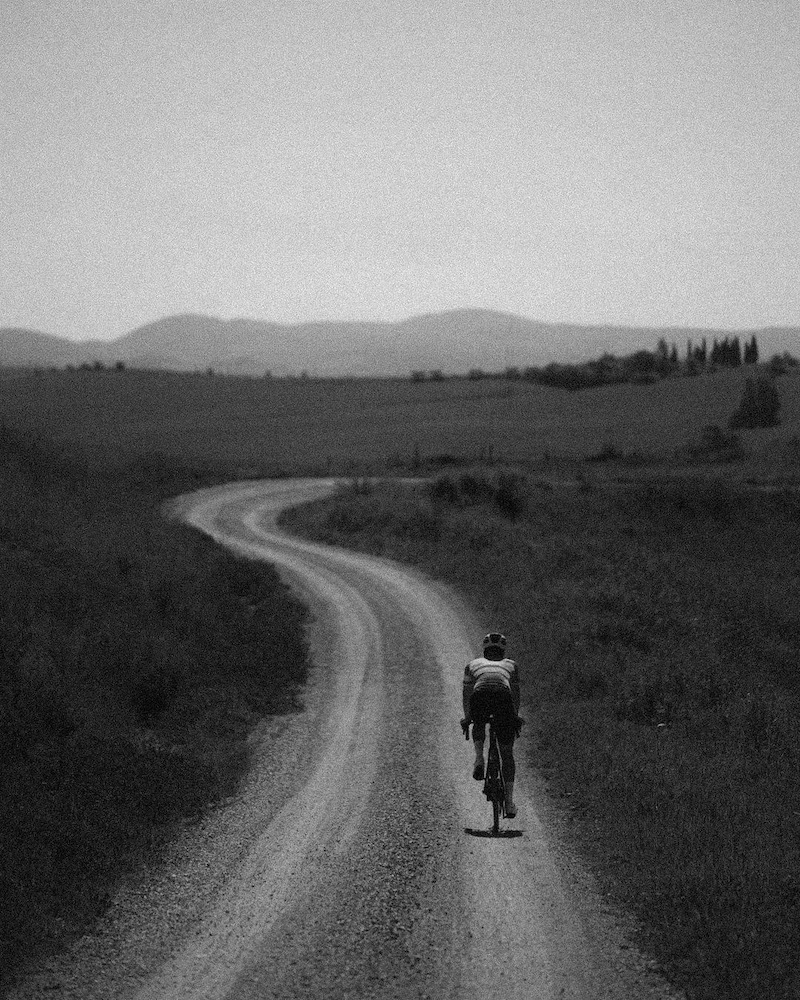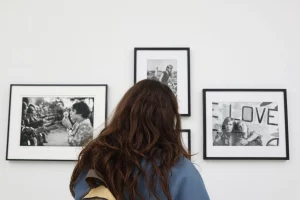Playing with texture, adding character to an image, telling a story through imperfection… Grain in photography is much more than just an effect—it’s a true tool of expression.
While some seek absolute sharpness, others embrace grain to enhance emotion and add a unique dimension to their images. This is precisely the approach of Clement Siegfried, a passionate photographer who has made grain a key element of his artistic style.
“With the authentic feel that grain brings, I’d say I love conveying a sense of nostalgia, like a dream or a memory.”
In this article, discover how to use grain to add character and authenticity to your photos, explore its origins, and get inspired by Clément’s unique vision.

Analog vs Digital: Understanding the Origins of Grain in Photography
Grain in photography is a distinctive texture that adds depth and soul to images. Its origin and expression differ between analog and digital photography.
Analog grain finds its roots in the era of photographic films. It resulted from the silver crystals present on the film and the effect of light during exposure. This unique texture varied in size and intensity, bringing an organic quality to photos. Fine-grain films produced sharp images with subtle grain, while coarser-grain films offered a more rugged and expressive aesthetic.
With the advent of digital photography, grain is no longer a physical characteristic but an effect added in post-production. It allows photographers like Clément Siegfried to recreate the aesthetic of analog grain in a controlled manner. Editing software provides tools to adjust the size, intensity, and structure of digital grain, offering unprecedented creative flexibility.


Why Use Grain as a Creative Tool in Photography?
Incorporate Grain to Add Texture and Character
Grain in photography is a powerful tool to infuse texture and character into your images. As emphasized by Clement Siegfried:
“For me, grain adds a more tangible, physical aspect to my photos, whether they are on a screen or printed on paper. It can also evoke the analog rendering that I am quite fond of, thus bringing an even more authentic feel.”
Never miss an article again!

Creating a Retro Atmosphere with Strong Grain
When used intentionally, grain creates a captivating vintage ambiance. By increasing the size and intensity of the grain, you can give your photos a retro look reminiscent of analog snapshots from past decades. This can be particularly effective in evoking a gentle nostalgia or telling a timeless story.
Clement uses grain in his photos to evoke a warmer atmosphere, “like when you first see your films developed in the lab, or when you open your grandparents’ photo album.”
Balancing the Grain with Other Elements of Your Image
Although grain can add a valuable artistic and textural dimension, it is essential to balance it judiciously with other visual elements. Too much grain can overwhelm the image and divert attention from the main subject. It is important to find a balance that highlights the grain while preserving the readability and impact of the photograph.


Telling Authentic Stories with Grain in Photography
How Can Grain Enhance the Narrative in Photography?
Grain in photography is not limited to just a visual texture; it can also serve as a silent yet powerful narrator. It contributes to strengthening the photographic narrative, adding layers of emotion and authenticity to each image. As explained by Clement Siegfried, who masters the art of grain: “It softens the image and smoothes the edges, creating a less ‘sharp’ aesthetic, and that’s precisely what I like.”
Clement adds: “I actually find that many images we see every day are very sharp, sometimes with a ‘surgical’ style, especially with the new technologies and lenses on the market.” It is true that in the era of ultra-modern technologies and ultra-precise lenses, this deliberate choice of softness can be a way to stand out and inject a welcome dose of character and emotion into photographs.
How to Use Grain to Evoke Emotions?
Grain, with its ability to evoke nostalgic memories and soften images, can also be used to elicit emotions in viewers. It provides an opportunity to create deep connections by evoking sensations of warmth, familiarity, and comfort.
For Clement: “Connecting digital with the filmic aspect allows us to view photos from a different perspective. Whether it’s sports, travel, or portrait shots, grain brings a unique style and transforms each image into a complete visual story. With the authenticity that grain brings, I want to convey this somewhat nostalgic aspect, like a dream or a memory. I really like using it on travel photos precisely for this reason.”
Indeed, it is a captivating way to reinvent photography, infuse it with soul, and capture moments with an unparalleled emotional dimension.
Feeling inspired by this article?

Mastering Grain in Photography: Practical Tips and Tricks
Efficient Management of Grain in Post-Processing
As we discussed earlier, grain can also be managed in post-processing. Clement edits his photos with Lightroom to: “adjust the amount and size of grain based on each photo. If the goal is to create a more graphic atmosphere, with plays of shapes, blur, or colors, I opt for a more pronounced grain. This enhances the sense of texture, reminiscent of a canvas.”
To master grain in photography, Clement advises us to play with parameters such as the amount, size, and roughness of the grain. He warns against excess, as grain can quickly overpower the image itself. He recommends experimenting to find the rendering that best matches your artistic vision, emphasizing that the success of a photo ultimately lies in the pleasure it brings.
Sustaining Constant Inspiration in Photography
Many famous photographers have effectively harnessed grain to their advantage in creating memorable works. Clement mentions Sebastien Zanella as a source of inspiration. He also draws inspiration from cinema, especially from recent films shot on film, such as “We the Animals” or “Falcon Lake,” which have caught his eye and fueled his creativity.


What Mistakes Should Be Avoided When Using Grain in Photography?
According to Clement Siegfried, a major mistake to avoid when using grain in photography is: “adding it just for the sake of adding it because this practice can often lead to a significant reduction in the technical quality of the image.”
Clement cautions against adding grain without justification or without a clear understanding of its purpose in the photograph: “If you can’t explain to yourself why grain is necessary in a particular photo, then there’s no valid reason to incorporate it.” Grain should have a specific role and be used thoughtfully to contribute to the aesthetics or narrative of the image, rather than being added arbitrarily, which could degrade the overall quality of the photograph.

Essential Aspects to Remember for Mastering Grain in Photography
Grain in photography plays an essential role in creating a unique style and visual storytelling. As Clement Siegfried wisely pointed out, “Grain primarily appeals to those who seek to give a particular dimension to their photos, to tell a story through their work, and to those who are not afraid to sacrifice some technical quality to achieve a deeper artistic goal. It offers an opportunity to transcend the ‘wow’ factor and create an emotional connection and a unique atmosphere.”
While grain is often associated with film photography enthusiasts, it is not exclusive to this group. Everyone is free to explore and use it as a creative tool. The key to mastering grain lies in experimentation. As Clement mentioned, “It can be adjusted to achieve the desired result, and it’s by trying different approaches that one can develop their own photographic style.”
Ultimately, the creative process of using grain in photography is a fascinating journey, open to all those who aspire to create images that go beyond technical perfection to tell stories, evoke emotions, and convey a unique artistic vision. It is a tool that invites experimentation, discovery, and allows each photographer to develop their own visual language. So, don’t hesitate to delve into the world of grain in photography and explore the multiple facets of this captivating art.
Photo credit: © Clement Siegfried














